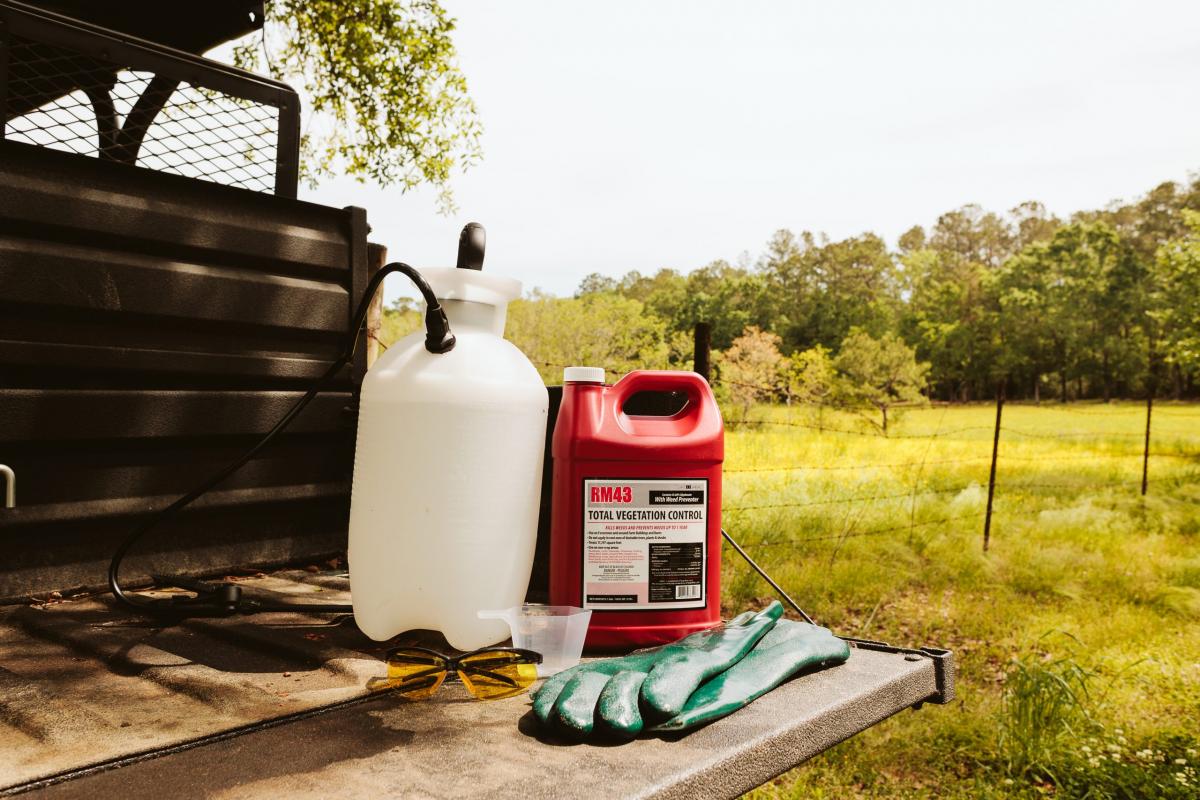
Whether treating for specific plants or specific areas with RM43, uniform application of herbicide is essential for effective weed control. Varying the rate of application or dilution ratios even slightly can result in either a poor result or unnecessary waste of product—and both are a misuse of time, money, and effort.
The most important part is coverage, how much product you apply over a given amount of surface area. To get the right coverage with RM43, you need to have the right dilution and the right volume of spray, and you also need to move at the right speed.
Get the right dilution ratio.
The proper ratio will depend on your weed control goals. For total vegetation control where a bare ground result is desired, mix 7.4 fluid ounces of product with how ever much water needed to cover 1,000 square feet using YOUR equipment. This could be 1 to 10 gallons of water depending on the type of sprayer you are using and the rate of the sprayer. For spot treatment, mix 6 ounces of product per gallon of spray.
Get the right rate and volume of spray.
Of course, how much chemical you mix per gallon is only one part of the application process. The most important part is coverage, how much product you apply over a given amount of surface area. Knowing your dilution ratio and coverage amounts is important in preventing over- and under-application, thereby maximizing your time, energy, and resources. On gravel driveways, be sure to use enough water to get the solution through the gravel to the ground.
Keeping the sprayer nozzle height below 4 feet above the ground or plant canopy, RM43 is best applied with a coarse droplet size or, if using a spinning atomizer nozzle, a volume mean diameter of 385 micros or greater. Whether you are spot treating or aiming for bare ground control, the key here is full, even coverage over all existing leaf structures and enough product reaching the ground to get 12-month control.
Take it slow.
Regardless of your dilution ratio, RM43 has a maximum application rate of 2.5 gallons per acre per year (or 7.4 fluid ounces per 1,000 square feet per year). Keep this in mind as you determine your rate of dispersion. Speed plays a huge role here, as you can see by the image below, which is the difference between 1mph and 4mph. Adding a dye can also help determine if you are achieving your optimal droplet size and density.

Take your chemical dilution and spray volume into account when determining the appropriate speed of your sprayer.
Make the most of your time, money, and effort with these spraying tips, and get it right the first time, once, and for all.
Need more information about how to apply RM43? Read the RM43 product information guide here.
